
Higher education company Grand Canyon Education (NASDAQ:LOPE) announced better-than-expected revenue in Q1 CY2025, with sales up 5.3% year on year to $289.3 million. The company expects next quarter’s revenue to be around $240.3 million, close to analysts’ estimates. Its GAAP profit of $2.52 per share was 2.9% above analysts’ consensus estimates.
Is now the time to buy Grand Canyon Education? Find out by accessing our full research report, it’s free.
Grand Canyon Education (LOPE) Q1 CY2025 Highlights:
- Revenue: $289.3 million vs analyst estimates of $287.1 million (5.3% year-on-year growth, 0.8% beat)
- EPS (GAAP): $2.52 vs analyst estimates of $2.45 (2.9% beat)
- Adjusted EBITDA: $102 million vs analyst estimates of $101 million (35.2% margin, 0.9% beat)
- The company slightly lifted its revenue guidance for the full year to $1.09 billion at the midpoint
- EPS (GAAP) guidance for the full year is $8.53 at the midpoint, beating analyst estimates by 1.5%
- Operating Margin: 30.4%, in line with the same quarter last year
- Free Cash Flow Margin: 20.3%, down from 27.7% in the same quarter last year
- Students: 127,779, up 6,991 year on year
- Market Capitalization: $5.29 billion
Company Overview
Founded in 1949, Grand Canyon Education (NASDAQ:LOPE) is an educational services provider known for its operation at Grand Canyon University.
Sales Growth
A company’s long-term performance is an indicator of its overall quality. Any business can have short-term success, but a top-tier one grows for years. Over the last five years, Grand Canyon Education grew its sales at a sluggish 5.5% compounded annual growth rate. This wasn’t a great result compared to the rest of the consumer discretionary sector, but there are still things to like about Grand Canyon Education.
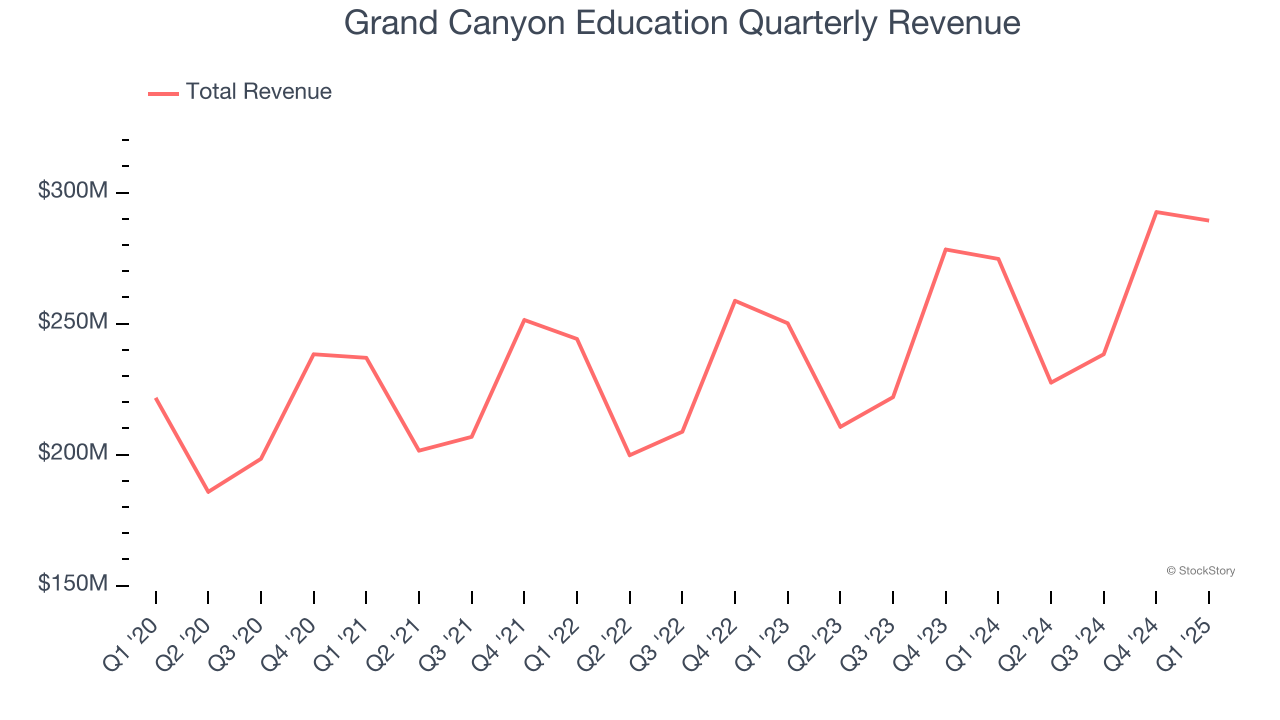
Long-term growth is the most important, but within consumer discretionary, product cycles are short and revenue can be hit-driven due to rapidly changing trends and consumer preferences. Grand Canyon Education’s annualized revenue growth of 6.9% over the last two years is above its five-year trend, but we were still disappointed by the results. 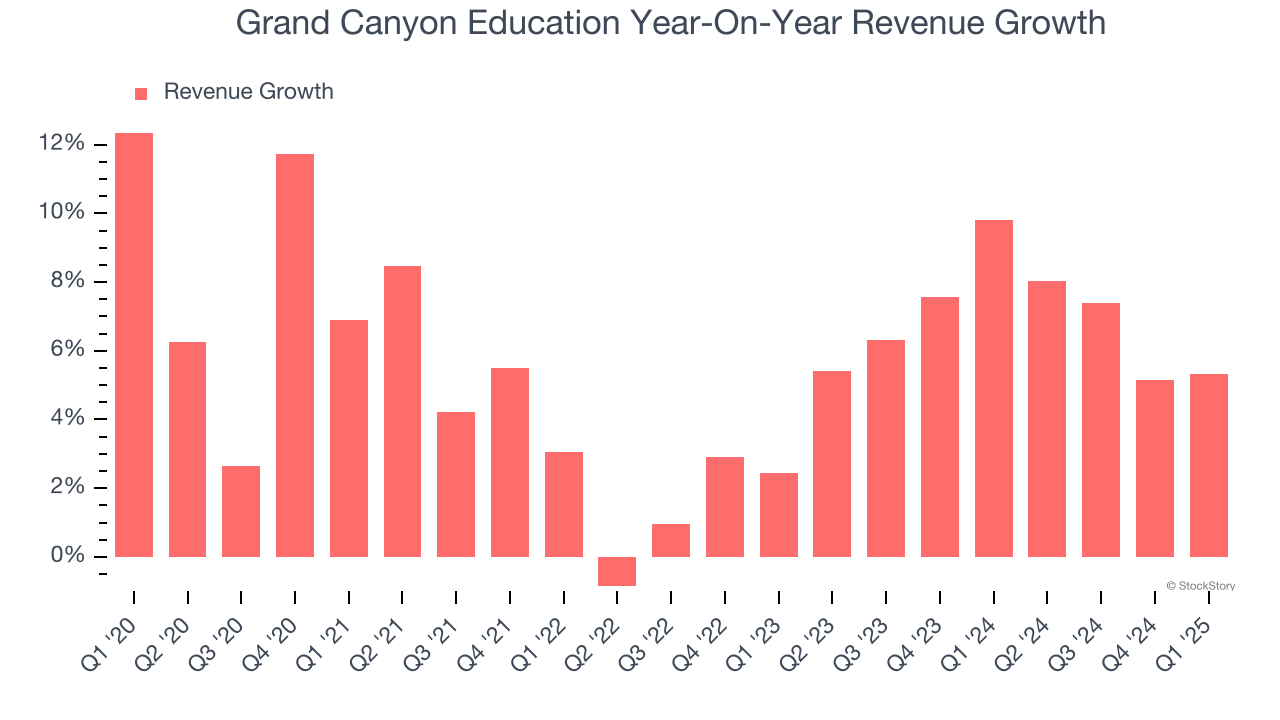
We can dig further into the company’s revenue dynamics by analyzing its number of students, which reached 127,779 in the latest quarter. Over the last two years, Grand Canyon Education’s students averaged 5.7% year-on-year growth. Because this number aligns with its revenue growth during the same period, we can see the company’s monetization was fairly consistent. 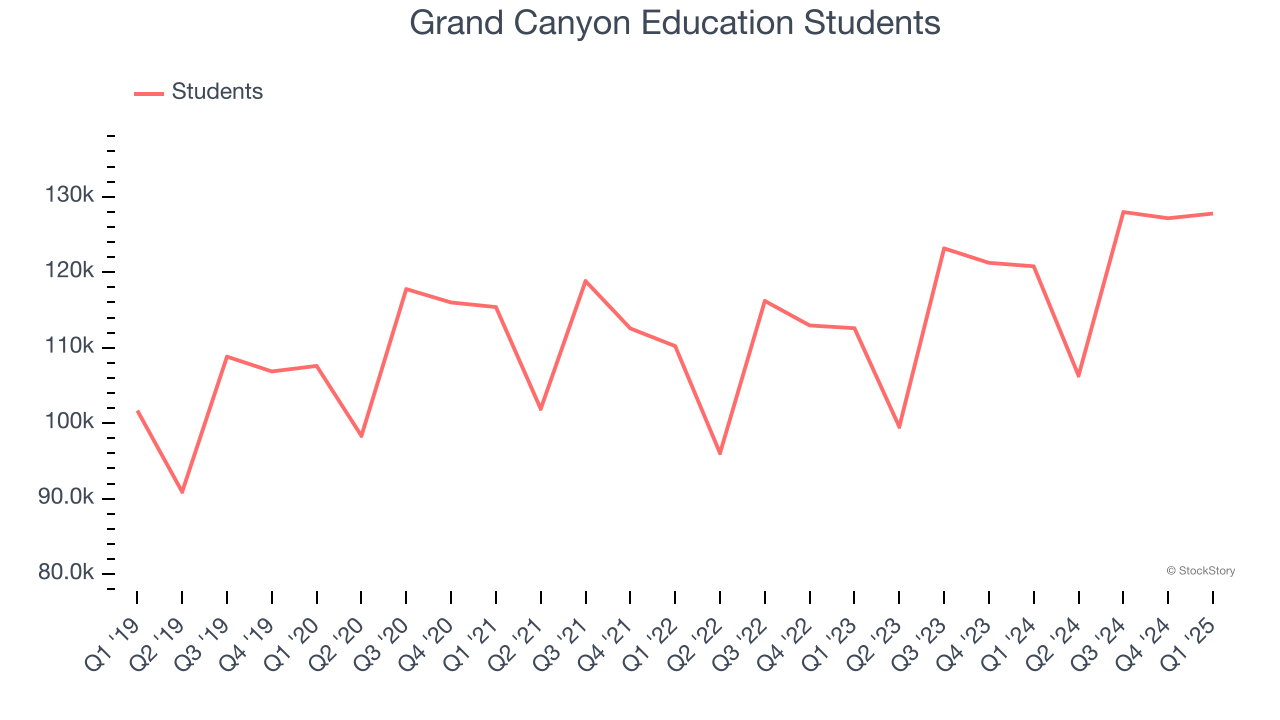
This quarter, Grand Canyon Education reported year-on-year revenue growth of 5.3%, and its $289.3 million of revenue exceeded Wall Street’s estimates by 0.8%. Company management is currently guiding for a 5.6% year-on-year increase in sales next quarter.
Looking further ahead, sell-side analysts expect revenue to grow 5.5% over the next 12 months, similar to its two-year rate. This projection doesn't excite us and implies its products and services will see some demand headwinds. At least the company is tracking well in other measures of financial health.
Here at StockStory, we certainly understand the potential of thematic investing. Diverse winners from Microsoft (MSFT) to Alphabet (GOOG), Coca-Cola (KO) to Monster Beverage (MNST) could all have been identified as promising growth stories with a megatrend driving the growth. So, in that spirit, we’ve identified a relatively under-the-radar profitable growth stock benefiting from the rise of AI, available to you FREE via this link.
Operating Margin
Operating margin is an important measure of profitability as it shows the portion of revenue left after accounting for all core expenses – everything from the cost of goods sold to advertising and wages. It’s also useful for comparing profitability across companies with different levels of debt and tax rates because it excludes interest and taxes.
Grand Canyon Education’s operating margin might fluctuated slightly over the last 12 months but has generally stayed the same, averaging 26.5% over the last two years. This profitability was elite for a consumer discretionary business thanks to its efficient cost structure and economies of scale.
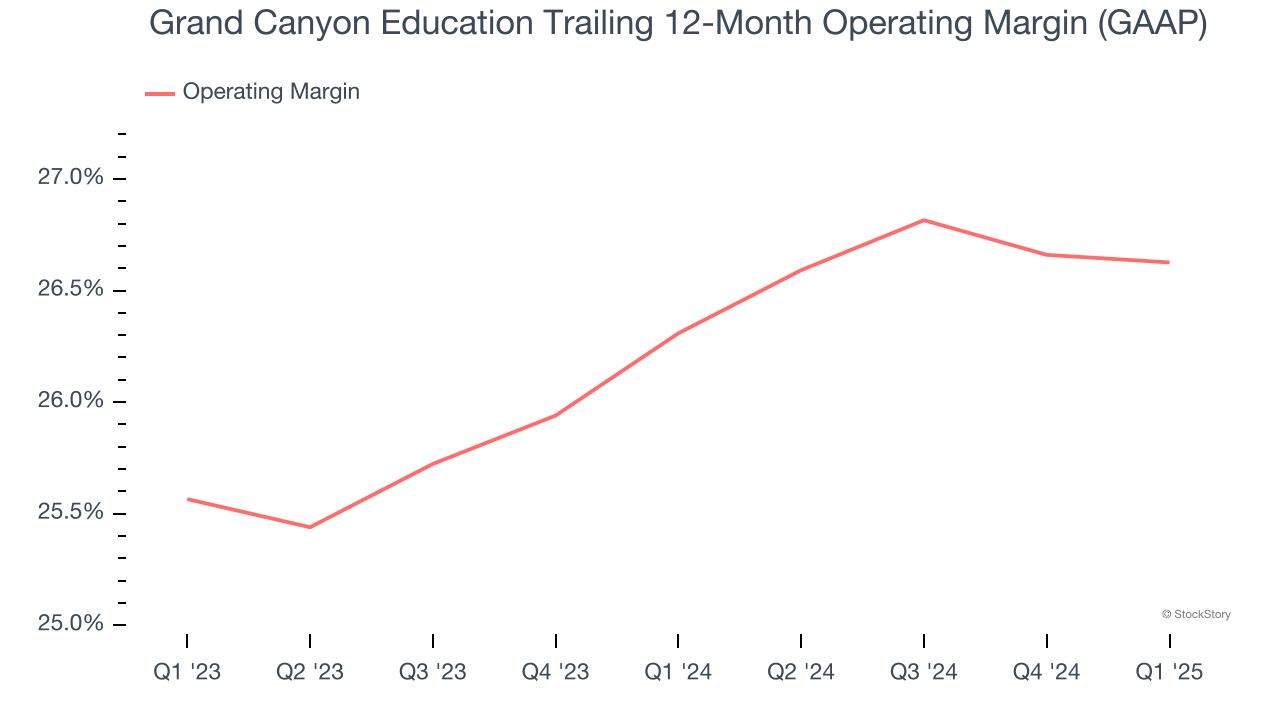
In Q1, Grand Canyon Education generated an operating profit margin of 30.4%, in line with the same quarter last year. This indicates the company’s overall cost structure has been relatively stable.
Earnings Per Share
Revenue trends explain a company’s historical growth, but the long-term change in earnings per share (EPS) points to the profitability of that growth – for example, a company could inflate its sales through excessive spending on advertising and promotions.
Grand Canyon Education’s EPS grew at an unimpressive 8.3% compounded annual growth rate over the last five years. This performance was better than its flat revenue but doesn’t tell us much about its business quality because its operating margin didn’t expand.
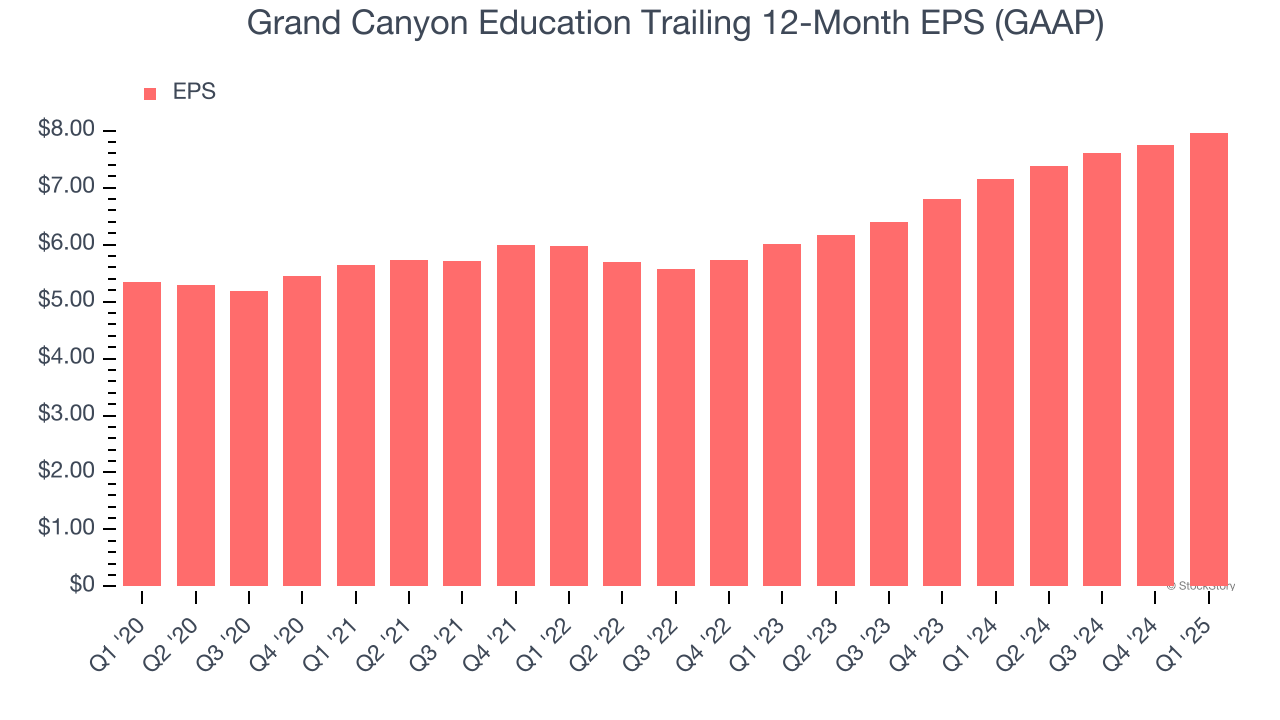
In Q1, Grand Canyon Education reported EPS at $2.52, up from $2.29 in the same quarter last year. This print beat analysts’ estimates by 2.9%. We also like to analyze expected EPS growth based on Wall Street analysts’ consensus projections, but there is insufficient data.
Key Takeaways from Grand Canyon Education’s Q1 Results
It was great to see Grand Canyon Education’s full-year revenue and EPS guidance top analysts’ expectations. We were also glad its revenue, EPS, and EBITDA exceeded Wall Street’s estimates. Overall, this print had some key positives. The stock remained flat at $185.51 immediately following the results.
Should you buy the stock or not? What happened in the latest quarter matters, but not as much as longer-term business quality and valuation, when deciding whether to invest in this stock. We cover that in our actionable full research report which you can read here, it’s free.
